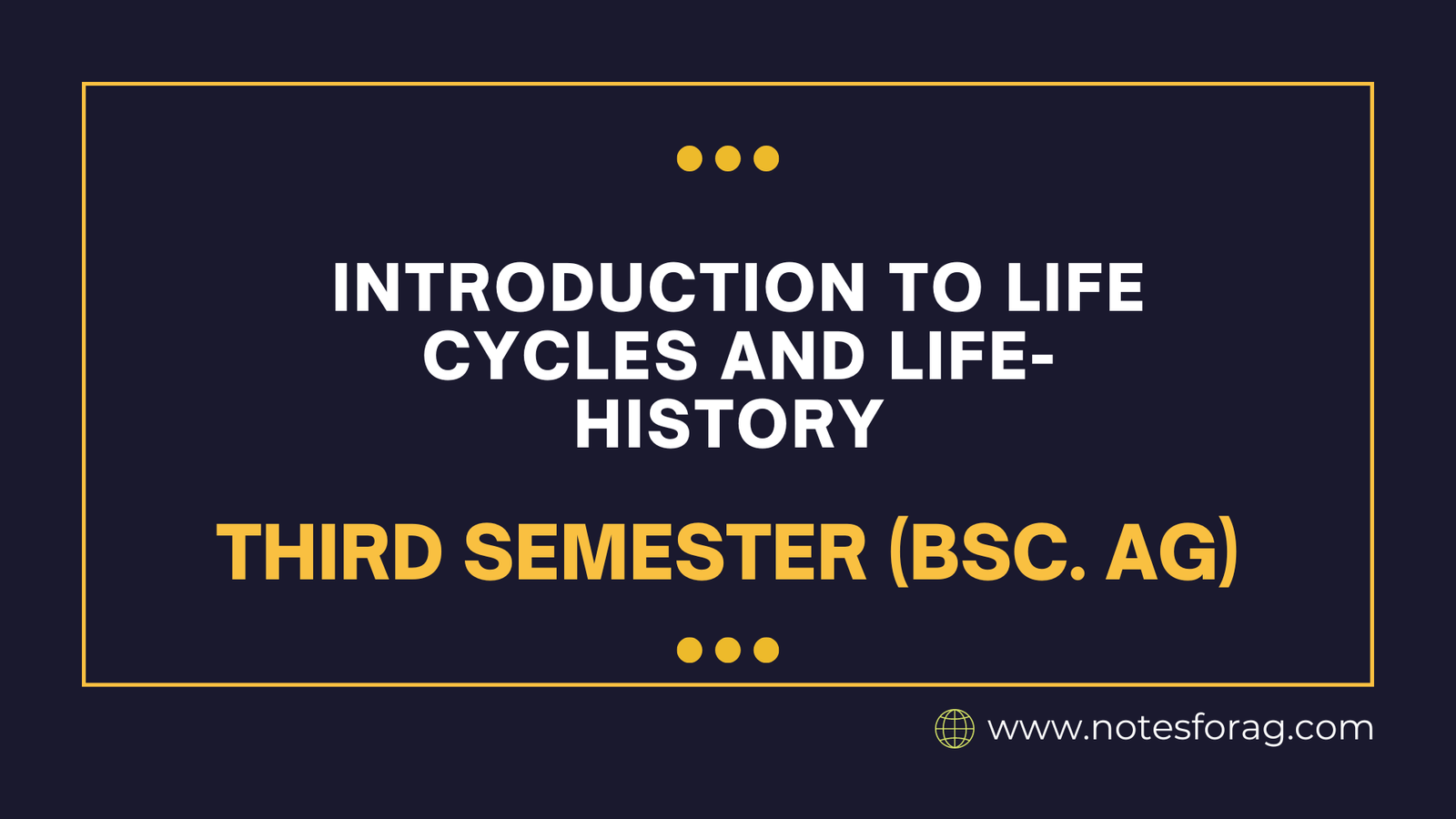A life cycles describes the stages that an organism goes through from birth to reproduction and death, including growth and maturation. Life-history refers to an organism’s methods for allocating resources such as time and energy for survival, development, and reproduction, which are impacted by environmental and evolutionary factors. Life cycles and life-history features, such as age of maturity, number of children, and lifespan, show how organisms adapt to their environments in order to survive and reproduce.
Table of Contents
Introduction to Life Cycles and Life-History
Life Cycles
The life cycle is the series of steps that an organism goes through from the start of its life until it reproduces and gives birth to the following generation. A life cycle normally consists of birth, development, maturation, reproduction, and death. entities have different life cycles based on their species and environmental conditions, but the concept applies to all living entities, including animals, plants, and microorganisms.
The diversity of life cycles is broad, displaying a variety of tactics tailored to varied conditions. For example, simpler species like bacteria have simple life cycles that frequently contain binary fission, allowing for rapid population increase. More sophisticated living forms, such as plants and mammals, can exhibit elaborate patterns. Plants can alternate between generations, with both a diploid sporophyte and a haploid gametophyte stage. Mammals, on the other hand, typically have longer life cycles, which may include parental care and learning. Environmental factors such as temperature, food availability, and habitat conditions have a huge impact on these life cycles, reflecting life’s resilience and diversity on Earth.
Life Cycle of Butterfly

Common Stages of a Life Cycle
- Birth or germination: The beginning of life, whether as a seed or children.
- Growth: The organism grows in size and complexity.
- Maturity: The organism reaches the point where it can reproduce.
- Reproduction: The organism produces offspring, perpetuating the cycle.
- Death: The organism dies once it has completed its biological functions.
Life-History
The concept of life history refers to the set of changes and qualities that organisms exhibit during their life cycle, with a focus on those that improve reproductive success. Environmental stresses, resource availability, and ecological niches are among the many elements that influence life histories. Understanding these components allows researchers to better understand how various species adapt and prosper in their surroundings.
The age of initial reproduction, the number of offspring produced, growth rates, and survival patterns are all important aspects of life history. For example, organisms that reproduce early tend to have shorter lifespans and invest less energy in each child, a strategy shared by r-selected species.
Key Life-History Traits
- Age of maturity: When an organism becomes able to reproduce.
- Number and size of offspring: Some organisms have a high number of little offspring (for example, insects), while others have only a few large ones.
- Reproduction Strategy: Some species reproduce several times during their lives (iteroparous), whereas others reproduce once and die (semelparous).
- Longevity: The organism’s lifespan, including the elements that impact its longevity.
- Survival and mortality rates: How probable an organism is to make it through each step of its life cycle.
Examples
- Insects: Many insects have a simple life cycle with different phases such as egg, larva, pupa, and adult. Butterflies, for example, go through a complete metamorphosis, with the adult stage being reproductive.
- Humans: Humans have a somewhat leisurely life cycle, beginning with a long childhood and a period of dependency, followed by a reproductive phase and finally old age.
- Annual plants: They live their whole life cycle in a single growing season, from seed germination to seed production and death.
Evolutionary Significance
An organism’s life-history strategy is determined by its environment and the evolutionary pressures it confronts. Species in secure habitats with fewer hazards may evolve slower life cycles and longer lifespans, whereas species in unpredictable situations may evolve more quickly and with higher reproduction rates to ensure survival.
Life cycles describe the stages of an organism’s life, from birth to reproduction and death, whereas life history refers to the tactics utilized to manage resources for survival and replication. These strategies, formed by evolution and environment, encompass features like as maturity timing, offspring quantity, and lifespan, which assist organisms in optimizing their chances of survival and reproductive success under varied situations.
Frequently Asked Questions
What is a life cycle?
A life cycle is the sequence of stages that an organism goes through during its existence, beginning with birth, continuing with growth and reproduction until death.
How do life cycles differ between species?
Insects, for example, can go through a complete metamorphosis (egg, larva, pupa, adult), whereas mammals have a basic cycle of birth, growth, reproduction, and death.
Related Articles

